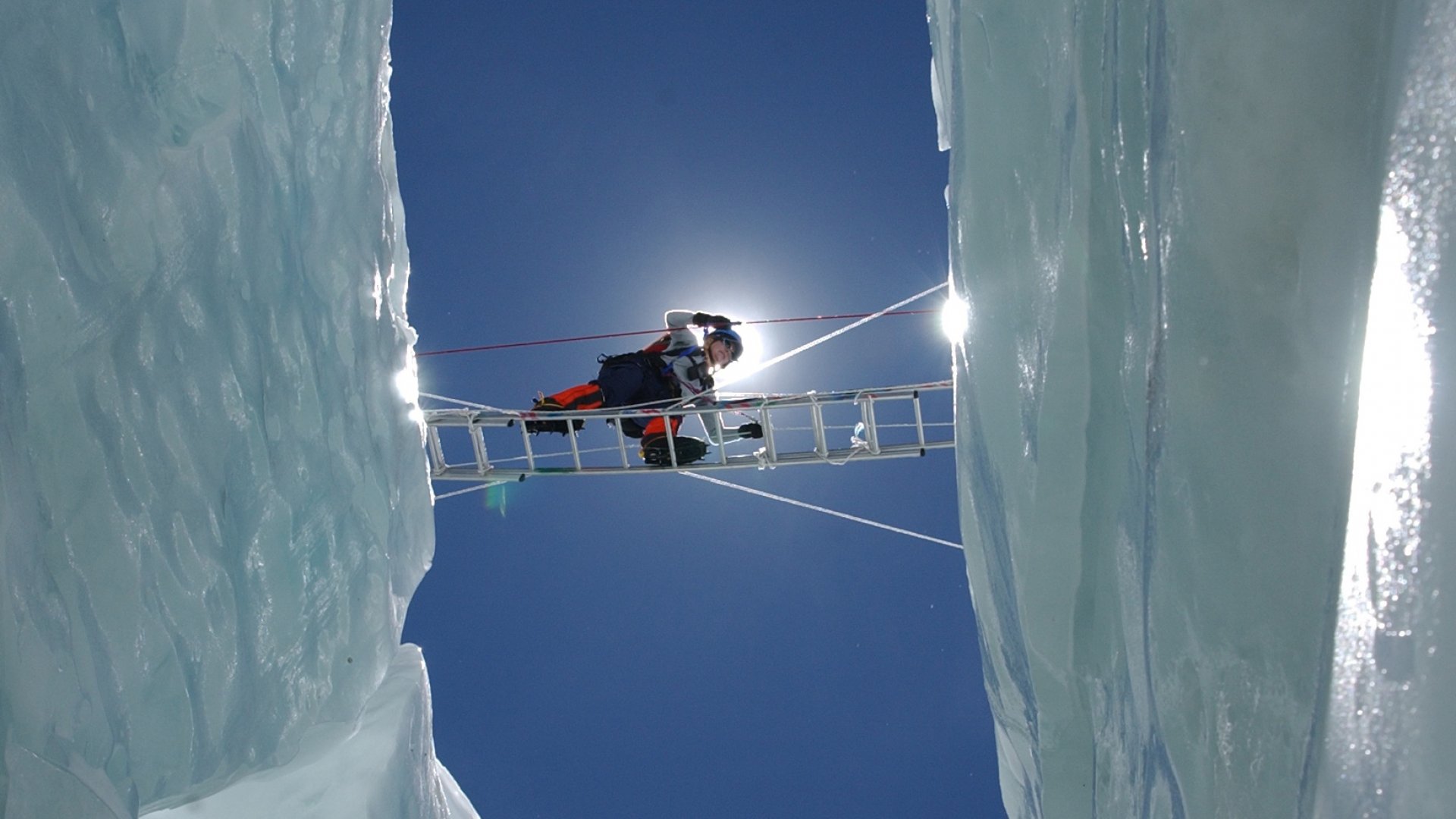The Expedition Everest is a great and challenging way to reach the zenith of Everest, which is full of physical and mental challenges. The satisfaction of being able to climb through such trepidation is unparalleled. Offering breathtaking views, adventure, challenges, and a once-in-a-lifetime experience, the Everest Expedition is a Himalayan paradise.
This route, also known as the South Col route of Mount Everest, is the most used route on the Expedition Everest. The Expedition Everest will follow the route the legends Sir Edmund Hillary and Tenzing Norgay Sherpa used to summit the world’s highest peak on May 29, 1953. Since then, many climbers have been able to step on the tip of Mt. Everest. Although this fact doesn’t change the fact that it is easy to summit Everest, it is the ultimate challenge in itself. For the Expedition Everest, you need experience in mountaineering and the desire to accomplish the risk and glory of Everest.
For Expedition Everest, you will need the following experience:
- in climbing high altitude peaks of at least 6000 meters
- be part of our International Everest Expedition team in Nepal,
- ascending difficult high-altitude mountain peaks of about 7000 or 8000 meters in the Himalayas.
Note That:
For the expedition Everest, trekkers must be able to ascend and descend fixed lines independently, even though fixed ropes will be used, and being proficient with crampons on very steep ice and snow slopes is required.
Himalayan Trekking will take you through a great journey in the Himalayas and guide you at every step. Safety and proper guidance is our main priorities.
Our professional team of Himalayan climbers (Sherpa) will be there for 24 hours to provide the proper guidance and assistance. With the proper guidance, you will be submitting Everest in a successful way. And here are all the things you will get at a reasonable price.
Join us for an exhilarating experience in the Himalayas, with world-class service at a very reasonable price.
For Expedition Everest, we will establish our Base Camp at 5300 m height at the base of the great Khumbu Icefall before making our way to Camp I at 6200 m. We will then climb towards Camp II at 6600 m which is in the middle of the Western Cwm(The Western Cwm is a broad, flat, gently undulating glacial valley basin terminating at the foot of the Lhotse Face of Mount Everest). After that, we will move our way up the Lhotse face to Camp III at 7200 m.
And finally, we will climb up from the South Col to Camp IV, which is at 8000 m, before making our ultimate push to the summit of Mt. Everest.
Setting up Everest Expedition Base camp
For expedition Everest, we shall set up an expedition base camp that will be permanent. While you are staying in the base camp, you will be offered a personal tent with an Expend down-filled mattress. Not only this, there will be a large dining hall with chairs and tables. In the dining room, there will be a carpet heated and lit by solar electricity. There will be internet facilities as well. All this is just to make your stay at base camp as comfortable as possible.
We provide a hygienic shower and toilet. Every climbing staff member will have their own tent, along with kitchen and store tents. We will also have a great expedition cook at the base camp who will provide you with the nutritious and nourishing meals required for the trek. There will also be an expedition team manager to arrange all the required logistics essential for a successful expedition.
Training and Climbing Strategy for Expedition Everest
Safety and proper guidance are our main priorities, so we will be spending several nights at the base camp to let climbers properly acclimatize before moving up to the higher camps. On reaching base camp, Our guide will provide with refreshments and climbing training for ultimately climbing Mount Everest.
- glacier travel,
- rope fixing, ascending and descending,
- safety techniques,
- abseiling,
- belaying,
- use of oxygen, masks, regulators, etc.
In order to check your skills, the guide will also arrange a climb of a 6,000-meter peak before our climb of Everest.
For proper acclimatization in the high altitude, we will climb the Khumbu icefall several times as part of our acclimatization trek to Camp 2 and Camp 3. Our team of Himalayan climbers, the Sherpas, will ensure that all the high camps are well equipped with tents, food, and oxygen for the push to the summit. Before our push to the summit, we will return to base camp for rest and recovery. After we receive confirmation of a favorable weather forecast, we will head up to ABC (Avalanche Base Camp).
From ABC, we lean forward to Camp 1, Camp 2, Camp 3, Camp 4, and finally the summit. There will be the availability of the expedition tents at all the higher camps. One Sherpa guide is for one climber to support. This is to ensure that every climber gets proper guidance and support to enable them to climb the peak and return to the base camp safely.
Climbing Gears, Everest Expedition Food and Load Ferry
We provide you with essential climbing gears like high-altitude tents, solar lights, carpeted dining tents with chairs and tables, oxygen, mask and regulators, climbing ropes, etc. We provide nourishing and hygienically prepared food at both base and advanced base camps during your Everest expedition. Plenty of high-altitude foods will be provided at higher camps. Unlike other expedition operators, we don’t charge our climbers extra for all the expedition load ferries from base camp to all the higher camps.
Everest Expeditions safety, communication, and weather
Leave it to the Sherpas for climbing Mount Everest and other high peaks! Climbers will be supported by our climbing Sherpas throughout the expedition. Our climbing Sherpas have widespread knowledge of wilderness medical training and have the capacity to deal with general medical issues. We have oxygen and complete medical kits, as well as a Gamow bag.
Guides will recommend to the climbers that they carry personal microfirst-aid kits with them. Trekkers must use the latest TOP OUT mask and oxygen regulator, along with 4-liter Poisk oxygen bottles. There are several tips for the Base Camp Trek as well that may be useful for this expedition. Two-way radios and satellite phones are always at hand for communication.
Our movements depend on good weather to ensure the safety of all our climbers and supporting team. Thus, we have a professional and reliable weather forecast service for the whole duration of the expedition. There will be regular updates and information on the weather throughout the journey to Everest and back.
Expedition Everest South Col Routes:
Base camp: 17,060’/5200 m
The Everest base camp lies at 5,200 meters on a moving glacier. We will be spending up to 45 days here. Expect the weather conditions in the base camp to be constant, which means good all day. Our stay at the camp will consist of the shifting and moving of tents and platforms as the ice moves and melts. During your stay in the base camp, the stunning and mystic view of Pumori, Lola, Nuptse, Nutse and the Khumbu Icefall will lure you. You will experience warm mornings and occasional afternoon snowfall. The base camp will feel like a small village high up in the Himalayas, as there will be the presence of many expedition teams.
Camp 1: 19,357’/5900 m
Achieving Camp 1 is one of the most challenging parts of the south-side climb. It is mostly technical as it crosses the Khumbu Icefall. The Icefall is 2,000 feet of moving ice with deep crevasses, transcending ice sera’s, and avalanches off Everest’s west shoulder. We will only be spending two nights at Camp I for acclimatization. We will head towards Camp 2 only after proper acclimatization.
Camp 2: 20,998’/6400 m
After base camp, Camp 2 is where you will spend the most time on your expedition. It is found in a lateral moraine at the bottom of the west ridge. As Camp 2 is located in a safe and sheltered location, all expedition operators establish their main climbing camp here. There will be tents for every climber, along with kitchen and dining tents. The C2 is also blessed with amazing views of Lhotse. You will be spending a lot of time at Camp 2 as it is also the main acclimatization camp. It is used as the base for camp 3 and the summit push acclimatization.
Camp 3: 23,294’/7100 m
Since all climbers are feeling the impacts of high elevation and are not yet utilizing supplemental oxygen, climbing the Lhotse Face to C3 is most challenging. The Lhotse Face is steep, and the ice is tough, but don’t let this discourage you as the course is settled with rope, the rope can be at angles ranging from 30 to 45 degrees. It is a long and hard journey to C3 yet is required for proper acclimatization preceding an attempt at the summit. You will be spending at least 2 nights at camp three.
South Col: 26,300’/8000 m
The last camp, Camp 4, is found at the South Col. Most climbers make their way up to the South Cole without supplementary oxygen. The South Cole is surrounded by Lhotse to the south and Everest to the north. Not to mention, it is flat and covered with loose rock. Climbers must navigate through two rock sections: the Yellow Band and the Geneva Spur.
From Camp 3, on the way to the summit, climbers must cross the yellow band and the Geneva Spur on the way to the South Col. These barriers, while not technically difficult, are a challenge at an altitude of 25,000 feet. Both areas are set up with fixed ropes. The South Col is another world.
Sitting between Everest and Lhotse at 26,300 feet, it serves as the base for the summit attempt. Climbers don’t spend long here since the weather is always temporary and the altitude is destructive. Once there, they eat, rest, and then go to the summit.
The Summit: 29,029′/8848 m
The bid to the summit starts with a steep climb up the south side of Everest. It takes about 9–13 hours to reach the summit from the south Col. Reaching the Balcony at 27,500 feet, climbers turn west up the ridge to the South Summit, over the Hillary Step onto the Summit Ridge, and then to the True Summit.
The path to True Summit is a modest snow slope that demands a physical effort on top of the altitude requirements, but climbers climb through on adrenalin. And then, there it is: the Everest summit!
An unbelievable journey to a very unique place, worthy of all the mystique and lure.
Itinerary of Expedition Everest
Booking Advantage
- Best Price Guarantee
- Hassle-Free Booking
- No Booking or Credit Card fees
- Team of highly experienced Experts
- Your Happiness Guaranteed
Booking Advantage
- Best Price Guarantee
- Hassle-Free Booking
- No Booking or Credit Card fees
- Team of highly experienced Experts
- Your Happiness Guaranteed
© 2024 - Himalayan Trekking and Tours (P) Ltd. All Rights Reserved.










